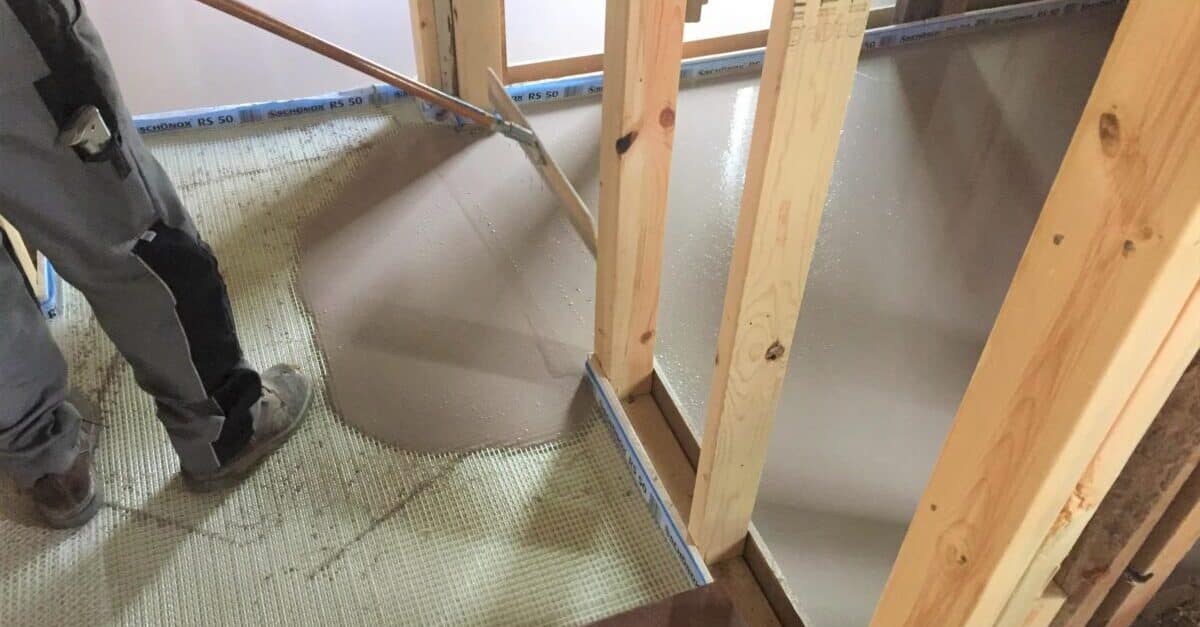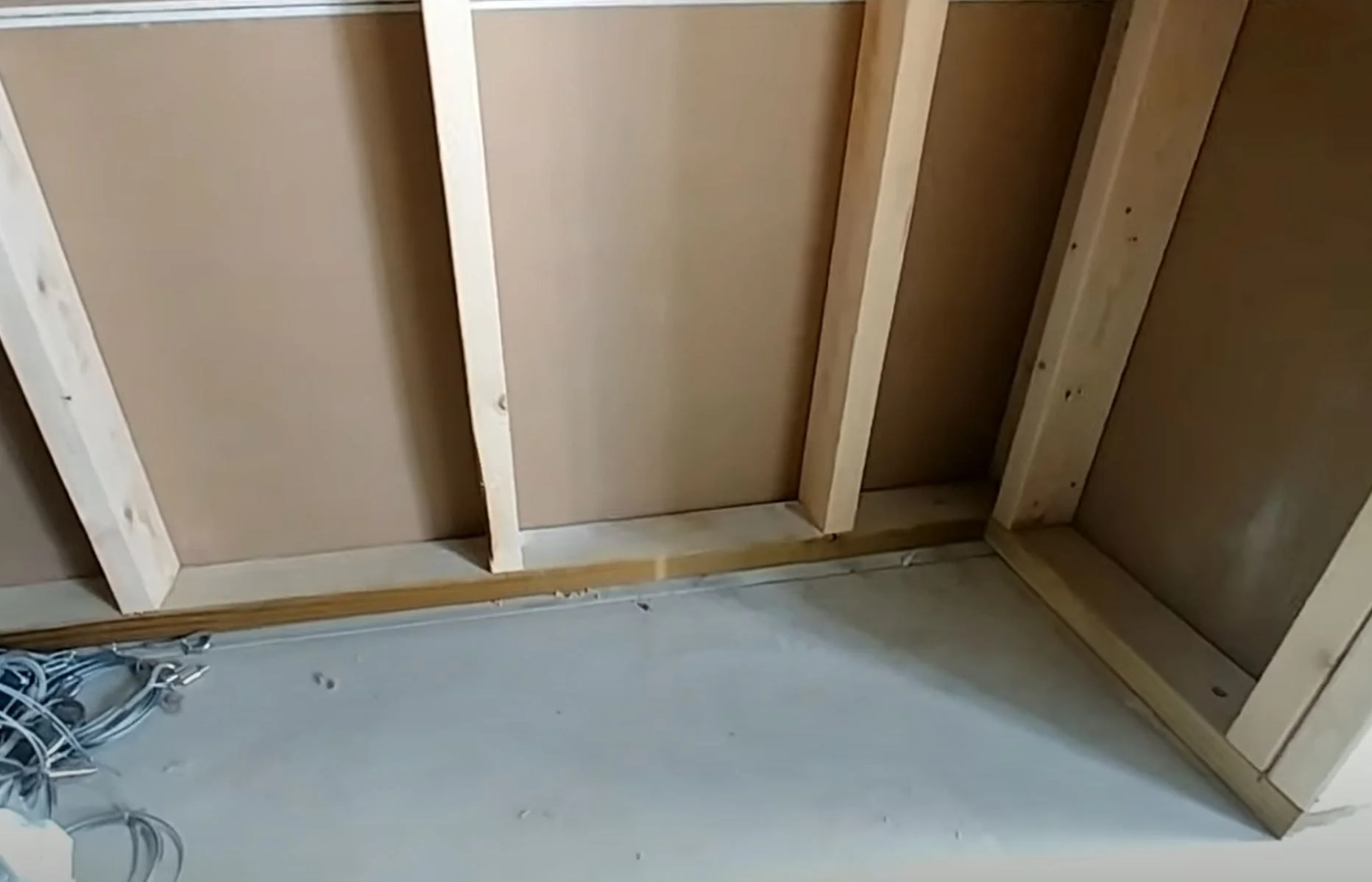Can plywood touch concrete? If you’ve ever wondered about this, you’re in the right place! Whether you’re a DIY enthusiast or just curious, we’ll explore this topic together. So, grab your hard hat, because we’re diving into the world of plywood and concrete!
Picture this: you’re working on a new project, maybe building a raised floor or framing a wall, and you have plywood and concrete in the mix. But can these two materials actually coexist peacefully? Stick around as we unveil the answer and discover the dos and don’ts of plywood and concrete interaction.
Now, you might be itching to find out whether it’s a match made in construction heaven or a combination that should be avoided. Buckle up, because we’re about to uncover the truth about plywood touching concrete.

Can Plywood Touch Concrete? A Deep Dive into the Compatibility and Best Practices
Plywood is a versatile and commonly used material in various construction projects. However, when it comes to using plywood in close proximity to concrete, certain considerations must be taken into account. In this article, we will explore the topic of whether plywood can touch concrete and discuss the implications, benefits, and best practices associated with this combination. So, let’s dive in and unravel the mysteries behind plywood and concrete compatibility.
The Compatibility of Plywood and Concrete
The compatibility of plywood and concrete largely depends on the specific application and environmental conditions. In general, plywood is not designed to be in direct contact with concrete for extended periods. Moisture from concrete can cause plywood to warp, swell, and deteriorate, compromising its structural integrity. Additionally, concrete contains alkaline compounds that can react with the adhesive used to bond the veneers in plywood, leading to delamination.
To mitigate these issues, it is advisable to create a separation between plywood and concrete. This can be achieved by placing a moisture barrier, such as a plastic sheet or waterproof membrane, between the two materials. This barrier helps to prevent direct contact and minimize moisture transfer. It is also crucial to ensure proper ventilation to allow any moisture trapped between the plywood and concrete to escape.
Benefits of Separating Plywood and Concrete
Separating plywood and concrete offers several benefits, including:
1. Preservation of Plywood: By preventing direct contact with concrete, the lifespan and durability of the plywood can be significantly extended. This is particularly important in applications where the plywood is exposed to moisture or in high-humidity environments.
2. Enhanced Structural Integrity: Plywood that is not in direct contact with concrete is less prone to warping, swelling, and rotting. This helps maintain its structural integrity and ensures a stable and robust construction.
3. Improved Aesthetics: Plywood that remains unaffected by moisture and alkaline compounds will maintain its appearance and finish over time, contributing to a visually appealing end result.
To fully harness these benefits, it is crucial to adopt best practices when using plywood in proximity to concrete, as we will explore in the next section.
Best Practices for Plywood and Concrete Applications
1. Use a Moisture Barrier: Always incorporate a moisture barrier, such as a plastic sheet or waterproof membrane, between plywood and concrete to prevent direct contact and minimize moisture transfer.
2. Allow for Ventilation: Ensure proper ventilation to allow any moisture trapped between plywood and concrete to escape. This can be achieved by leaving gaps or installing vents in the construction.
3. Seal the Edges: To further protect the plywood, seal the exposed edges with a waterproof sealant to prevent moisture infiltration.
4. Choose the Right Plywood: Select plywood that is specifically designed for applications in close proximity to concrete. Look for products that are moisture-resistant and have the necessary certifications for the intended use.
5. Follow Manufacturer Guidelines: Always adhere to the manufacturer’s instructions and recommendations for the installation and maintenance of plywood in concrete applications. This will ensure optimal performance and longevity.
6. Monitor and Maintain: Regularly inspect the plywood to detect any signs of damage or moisture infiltration. Address any issues promptly to prevent further deterioration.
By following these best practices, you can safely and effectively use plywood in conjunction with concrete, ensuring a durable and long-lasting construction.
Conclusion
In conclusion, while plywood can technically touch concrete, it is advisable to create a separation between the two materials to protect the plywood from moisture and alkaline compounds. By using a moisture barrier, ensuring proper ventilation, and adhering to best practices, the compatibility of plywood and concrete can be maximized. This results in improved structural integrity, prolonged lifespan of the plywood, and an aesthetically pleasing outcome. So, whether you’re working on a construction project or considering a DIY venture, make sure to keep these considerations in mind to make the most of plywood in proximity to concrete.
Key Takeaways: Can Plywood Touch Concrete?
1. Plywood can touch concrete, but it’s important to take certain precautions.
2. Moisture can damage plywood, so it’s recommended to use a moisture barrier or sealant between plywood and concrete.
3. Direct contact between plywood and concrete can lead to rot and mold growth over time.
4. Elevating the plywood from the concrete using a layer of plastic or foam can prevent moisture buildup.
5. Regular inspections and maintenance are necessary to ensure the plywood remains in good condition.
Frequently Asked Questions
When it comes to working with plywood and concrete, there are some considerations to keep in mind. Here are answers to common questions on whether plywood can touch concrete.
1. Is it safe to place plywood directly on concrete?
It is generally not recommended to place plywood directly on concrete. Concrete is porous and can absorb moisture, leading to mold, rot, and delamination of the plywood. Moisture from the concrete can also cause the plywood to expand and contract, leading to warping and weakening of the material. To protect the plywood, it is best to create a barrier between it and the concrete.
To prevent direct contact, you can use a vapor barrier, such as a plastic sheet or a specialized underlayment, between the plywood and the concrete. This barrier will help prevent moisture from transferring from the concrete to the plywood, minimizing the risk of damage and prolonging the lifespan of the plywood.
2. What are some options for creating a barrier between plywood and concrete?
There are a few options for creating a barrier between plywood and concrete. One commonly used option is to lay down a plastic sheet or vapor barrier before placing the plywood. This barrier will provide a protective layer, preventing moisture from seeping into the wood.
Another option is to use specialized underlayment materials specifically designed for this purpose. These underlayments are often made of moisture-resistant materials and may have built-in adhesive strips for easy installation. They offer an extra layer of protection against moisture and can help improve the overall durability of the plywood.
3. Can I directly glue plywood to concrete?
Gluing plywood directly to concrete is not recommended. Concrete surfaces are often uneven, which can result in poor adhesive bond and reduced structural integrity. Additionally, the moisture present in concrete can interfere with the adhesive, compromising its effectiveness.
If you need to attach plywood to concrete, it is best to use mechanical fasteners, such as screws or anchors. These fasteners provide a stronger and more reliable connection between the plywood and concrete. Make sure to pre-drill holes in the plywood to prevent splitting and use appropriate fasteners designed for concrete applications.
4. How can I protect plywood from moisture when in contact with concrete?
To protect plywood from moisture when in contact with concrete, it is essential to apply a waterproofing sealant to the plywood surface. This sealant acts as a barrier, preventing moisture from seeping into the wood. There are various types of waterproofing sealants available, such as epoxy coatings, polyurethane sealants, or waterproofing paints.
Before applying the sealant, ensure that the plywood surface is clean and free from any dirt or debris. Follow the manufacturer’s instructions for proper application and allow sufficient drying time. Regularly inspect the sealant and reapply as necessary to maintain its effectiveness.
5. Are there any alternatives to plywood for concrete applications?
Yes, there are alternative materials to plywood for concrete applications. One common alternative is oriented strand board (OSB), which is similar to plywood but made from strands of wood pressed together with adhesives. OSB is more resistant to moisture than plywood and is often used as a sheathing material in construction.
Another option is fiber cement board, which is a durable and moisture-resistant material made from a mix of cement, sand, and cellulose fibers. Fiber cement boards are commonly used as an alternative to plywood in exterior applications where moisture resistance is crucial.

Flush Concrete to Framing? Here’s a Stainless Flashing Fix!
Summary
So, can plywood touch concrete? The answer is yes, but with precautions. Plywood should be kept dry and away from direct contact with the ground or concrete to avoid moisture and damage. Using a moisture barrier or keeping the plywood elevated can help protect it. Remember to always check for signs of moisture and address them promptly to maintain the durability of the plywood.
